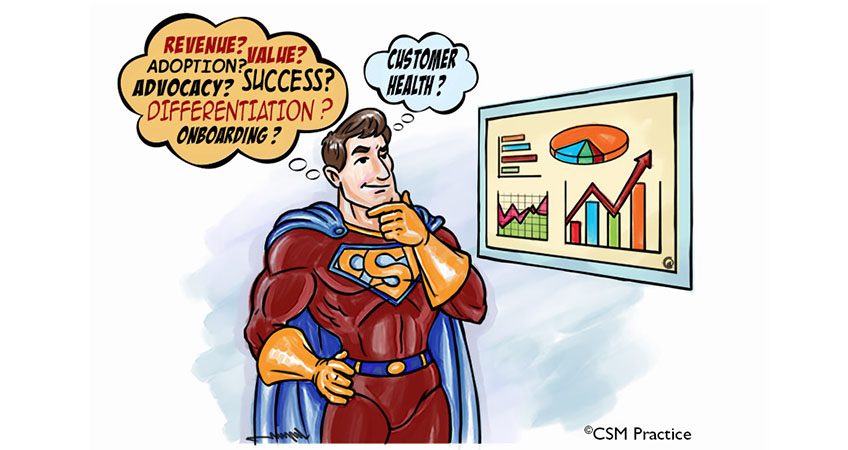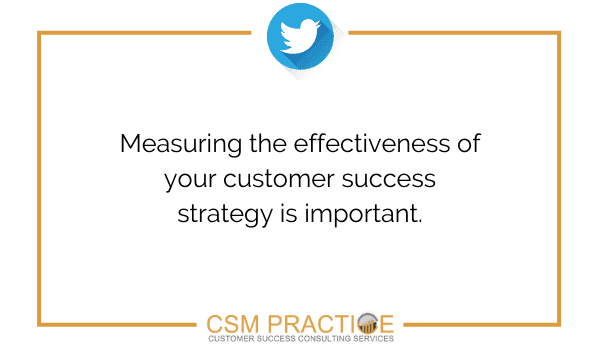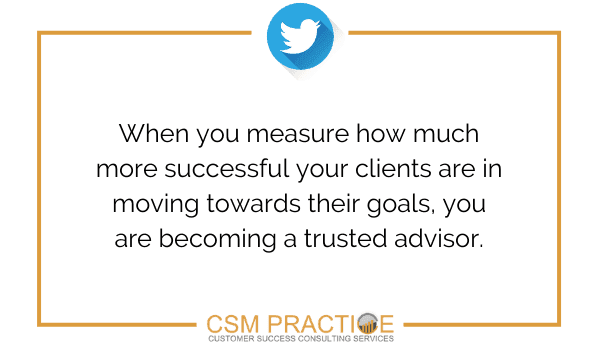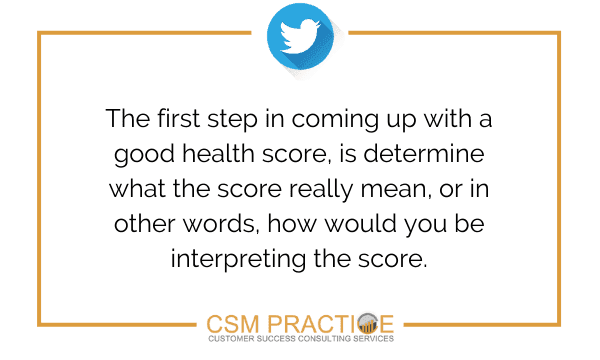Measuring the effectiveness of your customer success strategy is important. Unfortunately, if you ask most companies, you will find that they’re measuring only a handful of metrics that mainly focus on forecasting recurring revenue or tracking adoption. If that’s all you track, you’re really measuring YOUR success, not your clients’. While every business is a bit different, in a perfect world, you will have a dashboard for each one of these customer success metric groups:
- Revenue
- Onboarding
- Adoption
- Differentiating/sticky usage
- Customer value
- Advocacy
- Customer health
How successful are we financially with our current customer success methodology?
I find that nearly all of my clients track the impact of customer success on recurring revenue. To measure that, the following metrics are typically tracked:
- MRR – monthly recurring revenue
- ARR – annual recurring revenue
- ACV – annual contract value
- TCV – total contract value
- ARPU – average revenue per user (or customer)
- Total Upsell and Cross-sell
- Total Downsell
- Revenue from referral
- Churn
- Customer Acquisition Cost (CAC)
- Customer Retention Cost (CRC) Ratio
How well did the onboarding project go?
Measuring the success of your onboarding is typically tracked by benchmarking against other onboarding projects performed in the same customer segment. These metrics could include:
- CSAT scores
- Average onboarding duration
- Number of Support tickets created during onboarding
- The level of adoption during the first 30 days after the go-live date
- Engagement scores provided by the project manager
Is the customer frequently using my solution?
The second most popular group of metrics typically tracks adoption (aka usage). Typical metrics include:
- Total logins
- Unique logins
- Utilization %
- Specific popular feature use
How easy would it be for the customer to leave us?
The next group of metrics, is, unfortunately, less popular, though in my mind, is a critical one to track and focus your strategy on, to improve your renewal rate. To create this list, you’ll need to jot down a list of the differentiating features and sticky features. When a customer is actively and frequently using these features, it would be less likely that he would be willing to give those up and move to use your competitor’s solution.
How much value does our customer gain from our solution?
The success group of metrics is one of the most important ones, as those track the level of value derived from your solution. In other words, it answers the critical question of whether or not you are helping your customers achieve their business goals. See a high level of adoption only measures YOUR success with your client. If you’re for example, a sales tool, your customer is probably investing because they want to close more deals, be more effective during the sales cycle, accelerate it, and have their prospects more engaged, etc. When you measure how much more successful your clients are in improving their own business and moving towards their goals, you are becoming a trusted advisor and a true customer success manager.
Are our customers happy enough to spread the good word?
Another significant group of metrics to track is the level of customer satisfaction. Happy customers will impact your business’s financial health. Here are some important metrics to determine whether your customers are thrilled with you:
- Net Promoter Score (NPS)
- Customer Satisfaction Score
- Level of advocacy activities
- Revenue achieved through customer referrals
- Social Media engagement rate
Is my customer healthy?
The number one question on every customer success manager’s mind is: “Is my customer healthy?”. The first step in coming up with a good health score, is determining what the score really means, or in other words, how would you interpret the score:
1) The total level of value derived (ROI) from our solution
2) The probability of renewal
3) The level of activity and engagement
Once you make a decision – stick with it. Since the customer health score is typically a combination of these metrics, choose a few (3-4 metrics is more than enough!), assign weights to each, and calculate the score based on an average. Remember, if you designed the customer score to show the total ROI, don’t be surprised if it doesn’t always show you when the customer is in Code Red. We have other ways to determine that, like setting up alerts based on customer data.
Summary
It’s important to track multiple aspects of customer success to gain a holistic view of your customer success strategy. Don’t settle for just one or two groups, but instead pick a few metrics from each and start tracking. It’s like I always say: “Something is better than nothing…”.




